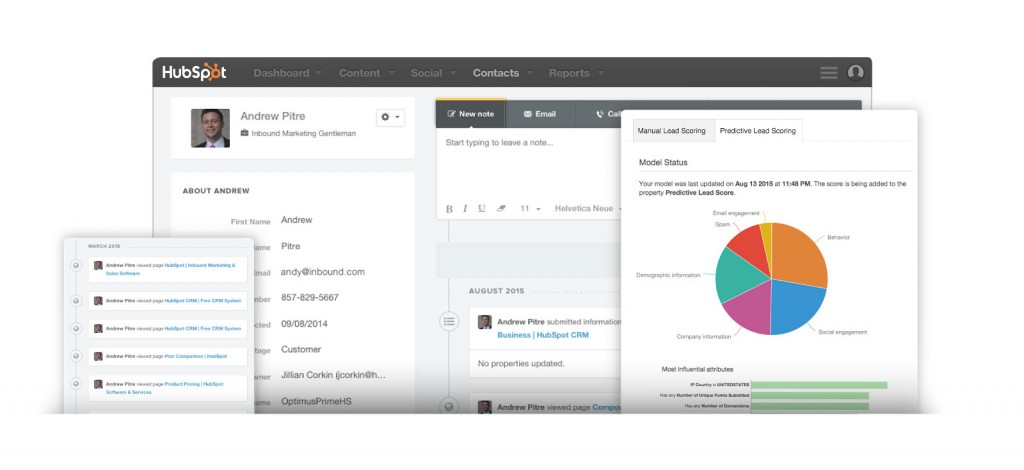-
Digital Marketing
We help you to use your digital potential. For a strong positioning, more visibility and more leads.
Get Growth ready
With the BEE.Transformance model, we bring continuous and profitable growth to your company. A new mindset for your team.
Industries
We transform your challenges into opportunities through the experience we have gained from projects in these industries.
-
HubSpot Services
As a HubSpot Diamond Partner, we help you implement your digital growth strategy with a focus on performance - by implementing and integrating new and existing systems as well as 3rd party apps.
HubSpot Thought Leader
As a HubSpot Diamond Partner with +50 certifications, host of the HubSpot User Group Zurich, HubSpot Trainer and HuSpot User Champions, you have access to in-depth HubSpot expertise.
HubSpot Solutions
The BEE.Theme offers you more creative freedom than any other theme on the market. Whether you're a beginner or a professional, a creative mind or a digital agency - with the BEE theme, you can easily unleash the maximum power for your pages in HubSpot CMS.
-
BEE.Blog
Knowledge around digital marketing, digital sales, technology, data intelligence and employees.
Knowledge Base
Pure knowledge: everything essential concentrated, compact, digitally prepared for you and ready to download.
What is inbound?
The most effective way to successfully combine digital marketing and digital sales.
-
BEE.Team
The BEE.Performers: many different characters - with one thing in common: the fascination for a digital world.
References
More than 100 large and small companies have already started with BEE: to more visibility, more performance, more growth.
Invest
Participate in the growth of BEE and become part of the BEE Growth Story by purchasing Digital Share Tokens.
We're hiring
Become a BEE.Performer! Are you ready for your own transformation?
3 Marketing Automation Tools at a Glance
If you are responsible for the marketing in your organization, you have what feels like an impossible task. You are struggling with too many priorities and not enough resources to get it all done. Your company wants more traffic, leads, customers, and brand awareness but is hesitant to adopt the latest best marketing practices.
Meanwhile, the marketing landscape is always in flux, and you need all the help you can get to keep up. It is time to increase efficiency through marketing automation.
There are many marketing tools available now that can help alleviate some of the burden by automating the most repetitive parts of your marketing plan. That means less stress on your already overwhelmed team and a better chance of getting the most essential work done.
But, with all the demands of trying to keep your marketing strategy ahead of the curve, how do you decide what you need and what will work best for you and your company. We will take a quick look at three marketing automation tools that will help you keep your marketing team moving forward.
HubSpot

Source: HubSpot
Hubspot is one of the most popular marketing tools available. That has a lot to do with the impressive list of powerful features. The marketing automation functionality is quite remarkable in its own right but is made even more powerful by its integration into HubSpot's full suite of marketing tools, including software for sales, support, and promotion. All of these, in turn, integrate into HubSpot's customer relationship management (CRM) software. This is where the power of marketing automation really shines when it has access to as much business data as possible.
At first glance, Hubspot's marketing automation visual board makes it exceptionally easy to use. However, due to the range of features, getting the most of it will take some learning. Fortunately, Hubspot Academy is a free resource to help you and your team learn. In addition, we at BEE offer suitable work sessions for you:
Once you have mastered the platform, there is really no limit to the creative ways you can use it to automate the most essential components of modern marketing. Powerful, integrated workflows can be set up to attend to crucial tasks automatically. Set up a workflow for lead nurturing, and Hubspot will automatically generate the right content at the right time to move leads down the sales funnel.
Even better, you will always know how your campaigns are performing. Set a goal and view the analytics to be sure you are getting the results you projected.
Hubspot automatically pulls data from your CRM using your segmentation rules to enroll prospects into workflows and then uses their information to populate customized messaging.
Once you are comfortable setting up workflows, they can easily automate other common tasks like:
- scoring leads
- automatically moving leads to new categories
- bulk managing data
Hubspot is not the only marketing tool on the market, but choosing an all-in-one solution like this will likely make it both easier and cheaper to operate your marketing automation in the long run.
ActiveCampaign

Source: ActiveCampaign
ActiveCampaign is a popular choice for smaller marketing teams as it offers a complete list of basic marketing automation functionality and some impressive advanced features. The platform offers powerful and flexible marketing automation functionality. It can easily handle lead scoring, dynamic content creation, and predictive sending.
Its integrated CRM offers ready access to the data necessary for automation, and the built-in email marketing means that email marketing automation can be handled from inside the platform. ActiveCampaign makes it simple to set up a custom series of welcome emails that will run automatically from preset triggers. It can also automatically monitor the engagement level of leads, tag potential customers who reach certain levels of engagement for follow-up. Powerful segmentation tools make it possible to customize who gets what message. Once these flows are set, they run automatically, meaning you and your team can attend to other tasks. The drag and drop automation builder allows you to build workflows visually and easily see your plans at a glance.
One unique feature of ActiveCampaign is the automation map. Instead of looking at your automation workflows and customer journey stages as isolated components, the automation map allows you to see an overview of how the different parts of the automation work together and connect. This may help identify bottlenecks in your customer journey and find solutions that keep leads moving deeper into the funnel.
Ontraport
Source: Ontraport
Ontraport is a marketing automation solution that comes with some additional advanced marketing features such as landing pages, forms, process automation, funnels, and journey-mapping.
The platform is marketed toward entrepreneurs, solopreneurs, and small businesses. With that in mind, it makes it easy to get started automating tasks even without extensive marketing automation experience.
Ontraport also excels in the area of reporting and insights making it easy to check on the performance of your automated campaigns. Like the other tools on this list, it centers around a CRM to keep all customer data updated and in a central location.
One area where Ontraport really stands out is email. The company has over a decade of experience in high volume email and enterprise-grade mailing infrastructure. That means you get access to reliable email delivery, personalized delivery testing, and reliable advice on current best practices.
Ontraport has other unique features, including Facebook custom audience integration. With this functionality, you can assign leads to specific custom audiences and create hyper-targeted automated advertising that gets the exact right message to precisely the right person at the right time.
It is also one of the only options that offers a built-in, fully functional eCommerce suite. This is not only a money saver, but it also helps e-commerce businesses completely integrate their marketing and sales process. Order forms are always in sync with the contact database, and there is even less friction in the buying and followup process.
You Decide
It will ultimately be up to you and your marketing team to decide what marketing automation tool will work best for your current situation and future goals. We can’t decide for you, but hopefully, these three options, recommended by us, will help narrow your research.
No matter what platform you choose, using tools to automate your marketing will ensure that you are consistently following your marketing plan. It will also free up time so that you and your team can attend to other critical marketing tasks.
Comment
Related Posts

What is Growth Marketing?
Florian Schneider | 1 Jul 2021
In the past, marketers would invest most of their energy and resources in mass media campaigns that mainly targeted a top-of-the-funnel audience through a select number ...
reading time: 6min
Zum Blog

Digital Sales Enablement: The questions you must ask your sales team
Lanny Heiz | 10 Mar 2022
This might wound a few egos, but who do you think knows the exact questions your customers ask? *Marketing team quickly pulls up all the data from the company website, ...
reading time: 10min
Zum Blog

Mobile marketing strategy: tips and trends for your business success
Romy Fuchs | 25 May 2023
Have you ever fumbled into your pockets or shuffled through everything in your handbag trying to find your mobile phone? If so, you’re not alone. With 6.925 billion ...
reading time: 12min
Zum Blog

